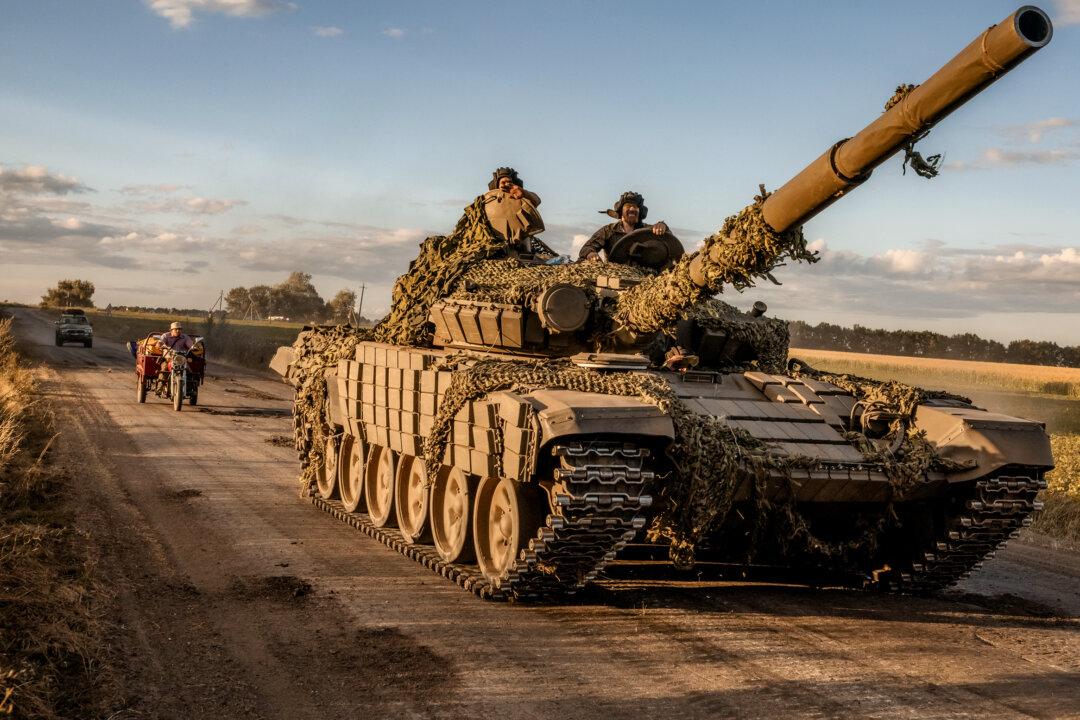At his confirmation hearing before the Senate Armed Services Committee on April 1, retired Air Force Lt. Gen. John D. “Razin” Caine said he would provide apolitical military leadership if he becomes the next chairman of the Joint Chiefs of Staff.
President Donald Trump nominated Caine as the top uniformed military leader in February after dismissing Gen. Charles Q. Brown Jr. from the Joint Chiefs chairmanship. Trump subsequently relieved other top military service officials, including Adm. Lisa Franchetti, chief of naval operations, and Gen. Jim Slife, vice chief of the Air Force.
During his time in uniform, Caine flew the F-16 Fighting Falcon fighter jet and served on the Special Operations Command and its component Joint Special Operations Command. He also oversaw the Defense Department’s highly secretive Special Access Programs and served as an associate director for military affairs for the CIA from 2021 until his military retirement in December.
Caine’s military career spanned roles in the active component of the military, as well as the Air National Guard.
Because he retired in December, Caine would need to be sworn back into active duty to serve as the Joint Chiefs chairman.
Political Independence
Throughout the hearing, senators from both parties noted Trump’s decision to replace Brown with Caine. While the chairmanship of the Joint Chiefs of Staff is usually a four-year commitment, Brown had served in the position for only about 16 months.“To this day, no explanation has been given for the dismissal of these officers. As such, I remain deeply concerned that they were dismissed for political reasons, which sends a chilling message throughout the ranks,” Sen. Jack Reed (D-R.I.), the ranking member of the committee, said during his opening remarks.
In light of the circumstances of Brown’s dismissal, Sen. Mazie Hirono (D-Hawaii) accused Trump of intending to install men and women loyal to him and “not to the Constitution or the American people.”
Sen. Kevin Cramer (R-N.D.) said Caine would make a good next Joint Chiefs chairman.
“While I agree that the dismissal of your predecessor was unfortunate, it’s behind us, and I cannot think of a better person to replace General Brown than you,” Cramer said.
During his confirmation, Caine repeatedly denied allegations that he donned a MAGA hat—a signature piece of Trump’s campaign merchandise showcasing his “Make America Great Again” slogan—when he met with Trump while on duty in Iraq in 2018.
“For 34 years, I’ve upheld my oath of office and my commitment to my commission, and I have never worn any political merchandise,” he stated when Chairman Roger Wicker (R-Miss.) first asked him about the allegation.

“I walked down, and this is where I met Gen. ”Razin“ Caine and, ‘What’s your name, general? What’s your name?’ And he gave me his name. ‘What’s your name, sarge?’ ‘Yes sir,’ and ‘I love you, sir, I think you’re great sir, I’ll kill for you sir,‘ then he puts on a ’Make America Great Again‘ hat,’” Trump said at the time.
At multiple points during the hearing, Caine said he believed Trump was referring to a different person as he recounted the MAGA hat story last year.
The Signal Chat Leak
Democratic senators also repeatedly asked Caine to comment on a recent episode in which a journalist was apparently inadvertently added to a group chat on the Signal messaging app, where high-level Trump administration officials discussed plans to launch airstrikes over Yemen. The incident has fueled concerns that Trump administration officials had discussed sensitive information in a channel that wasn’t sufficiently secure for such conversations.“I have always used the right system for the right kinds of communications,” Caine said during one exchange concerning the Signal episode. “I don’t know, in particular, what information was classified, and in what way on that Signal chat? I know that we must preserve the element of surprise.”
According to reporting originally published by The Atlantic after the magazine’s editor-in-chief was inadvertently added to the Signal chat, the discussion included a conversation about the timing and weapons to be used in U.S. strikes over Yemen last month.Sen. Kirsten Gillibrand (D-N.Y.) asked Caine if he believed any of the details discussed in the Signal chat, including the discussion about the timing of the strikes, should’ve been classified. Caine responded that he didn’t know enough about the operational planning to comment.

Top Threats
In a pre-hearing Senate questionnaire, Caine was asked what he expects will be his biggest challenge if confirmed. He responded that “significant challenges remain to achieve lasting security of America’s borders.” Caine also expressed concern about the U.S. strategy for countering China in the Indo-Pacific region.At another point in his questionnaire, Caine noted that China continues to field the largest naval fleet, consisting of some 370 surface vessels and submarines. He also noted recent Chinese advancements in hypersonic missiles.
“Many of China’s missile programs are comparable to other international top-tier producers. However, the [Chinese military] still has deficiencies in commander proficiency, long-distance logistics, urban warfare, and lacks modern warfare experience writ large,” he wrote.
Looking beyond China, Caine assessed that Russia doesn’t seek an “overt military attack against the U.S. or NATO” but “retains the ability and willingness to conduct asymmetric activity below what it assesses to be the threshold of military conflict.”
When asked to evaluate the potential of an alliance between China, Russia, North Korea, and Iran, Caine wrote that the goals of all four nations are generally similar, and they cooperate in arms sales and sanctions evasion efforts. Despite these areas of cooperation, Caine assessed that “these countries are not acting as a bloc, nor are they trending toward a NATO-style alliance.”

US Readiness and Posture
Throughout the hearing, Caine faced numerous policy questions relating to U.S. force readiness and posture.Sen. Jeanne Shaheen (D-N.H.) asked the nominee about some reports suggesting the Trump administration may discontinue the U.S. role as the supreme allied commander for Europe, a top military post within the NATO alliance.
Caine said, “Anytime we have U.S. forces deployed, we generally have wanted them under a U.S. commander.”
Trump’s military nominee said he would ultimately defer to the president on such a policy decision.
Shipbuilding and fleet readiness are also a “significant challenge,” Caine said. In 2016, the Navy released a plan to increase its fleet size to 355 ships by 2030. Since then, the U.S. naval battle force has continued to hover at between 270 and 300 ships.
“We’ve got to get to our congressionally mandated number of 355 ships as soon as possible,” Caine said.
At another point in the hearing, Caine discussed with Sen. Ted Budd (R-N.C.) the current fleet of U.S. fighter jets and plans for new sixth-generation fighter jets to replace aging aircraft.
Caine—who flew an F-16 fighter jet during homeland defense air patrols on Sept. 11, 2001—stressed that the U.S. military should be mindful of coverage gaps as it begins to retire older generations of fighter aircraft that are primarily employed for homeland defense roles.

Caine said the U.S. military will likely need to continue to rely on fourth and fifth-generation fighter aircraft “until we get to the point where we’re all where we need to be on sixth gen.”
Budd and Caine also discussed the continued importance of special operations forces in an era of increasing competition between near-peer competitors like China.
The nominee said he believes special operation forces can play a key role in creating strategic dilemmas for Chinese military planners. If confirmed, Caine said he would consult with the leaders of the Indo-Pacific Command and the Special Operations Command about how to invest in special operations capabilities and adapt them for a potential near-peer conflict in the Indo-Pacific region.







